Every couple of months we select examples from our extensive antique chimneypiece collection dating from the 17th Century through to the early 20th Century and display them within our London showroom to illustrate the breadth of intricate craftsmanship and richness of materials used throughout the past centuries. It is from these great architectural works of art that we take inspiration for our bepoke and reproduction fireplace designs.
Introducing the Latest Antique Arrivals to the Jamb London Showroom.
7 June 2019
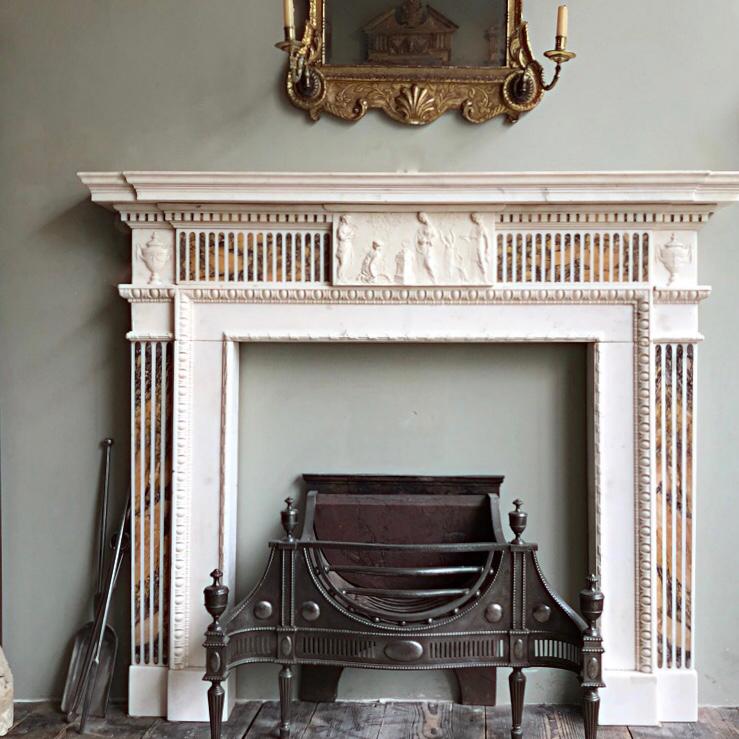
An 18th Century Palladian chimneypiece in our London Showroom.
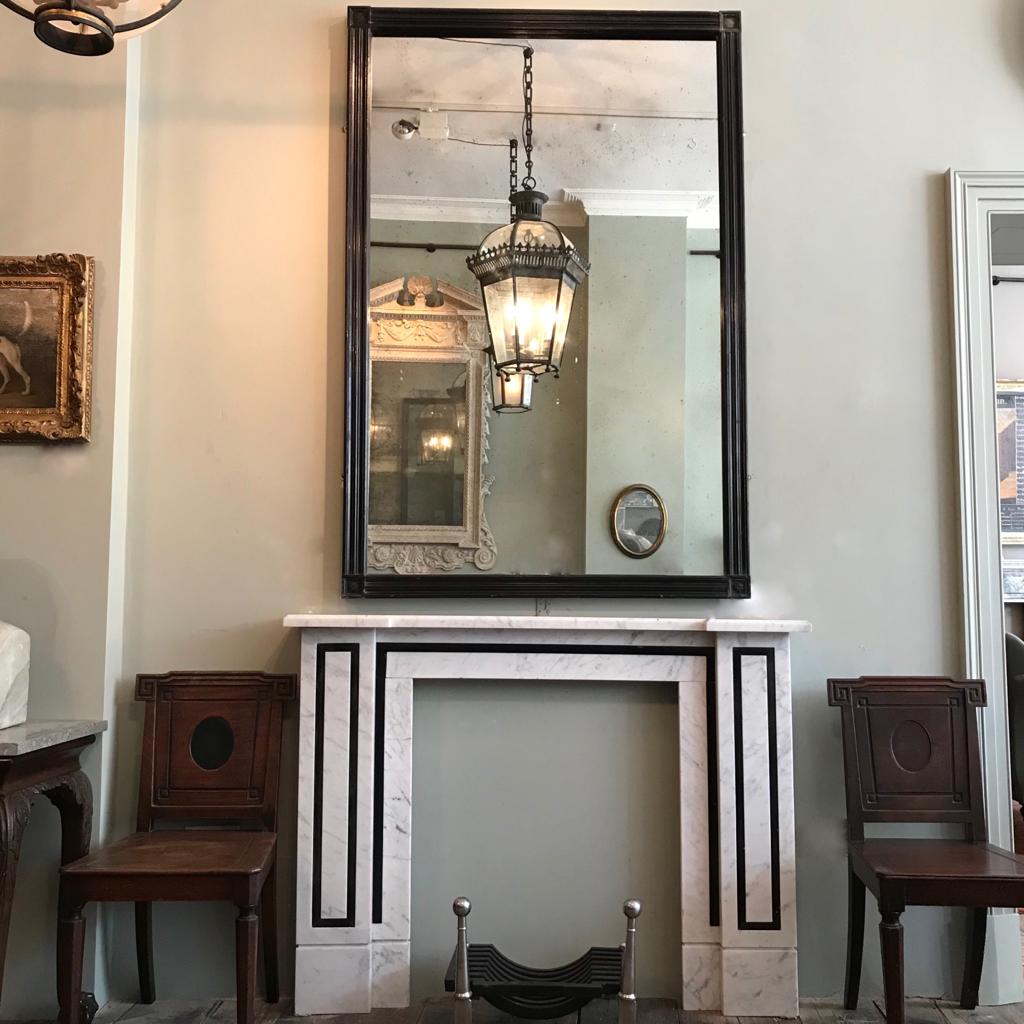
A Regency period antique chimneypiece designed by Sir John Soane and originally from Pell Wall Hall in Shropshire.
To stand a fireplace is no mean feat. It takes days with the expertise of two men. But it is always worth the effort when you see the result. The finest period chimneypieces surrounded by our antique furniture from our sister company, Hawker Antiques alongside our reproduction fireplace, lighting and furniture designs.
I am delighted to also announce that we have many new pieces of antique furniture that we have collated, which are exhibited within our London showroom. I select every piece merited on its distinguished design, and, as far as possible, still in its original condition, giving it atmosphere, presence and individuality.
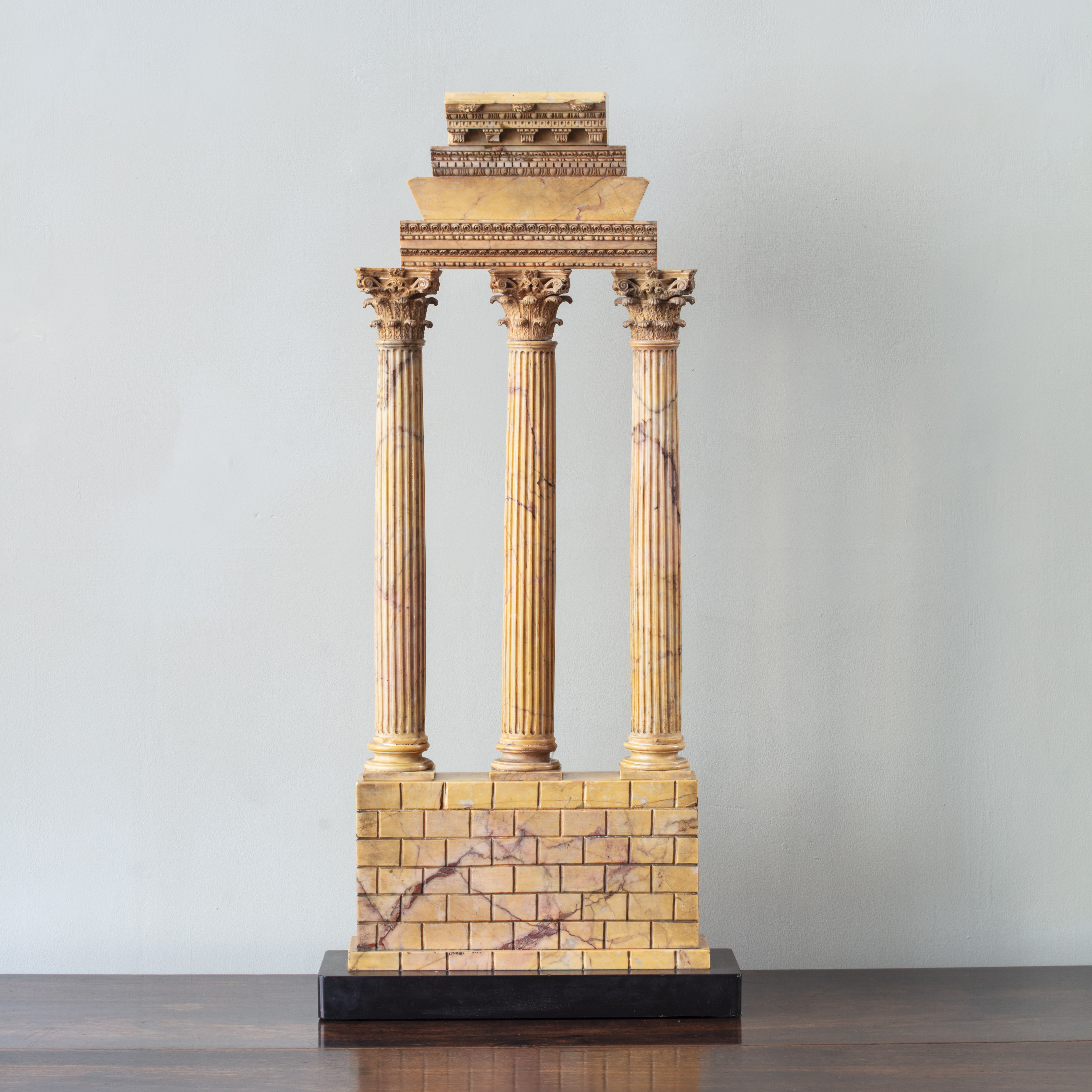
An unusually largely carved Giallo Antico Grand Tour model of the Temple of Castor and Pollux,
I am hopelessly drawn to souvenirs from the ‘Grand Tour’ era. Architectural sculptures that were displayed as mementoes. The intricately crafted ‘souvenir’ models symbolised a rite of passage in the becoming of a worldly gentleman in the 18th and 19th Centuries. Lasting proof that a gentleman had travelled and gained great knowledge and appreciation of the ancient past throughout Europe.

The scale is truly impressive.
I love the allure of miniature worlds. The perfectly constructed facsimile of the original never fails to move and amaze me. This unusually largely carved Giallo Antico Grand Tour model of the Temple of Castor and Pollux, (the mythical Greek/ Roman twin brothers) is magnificent. It’s scale is truly impressive, reflecting the forty-eight feet high columns of the temple, (the only part to remain) The Roman temple was built to honour the ‘Dioscuri’, the Gemini twins: Castor, who represented mortality and Pollux, immortality. When Castor was killed, Pollux asked Zeus to allow him to share his immortality with his brother so they could remain together and subsequently became the Gemini constellation.
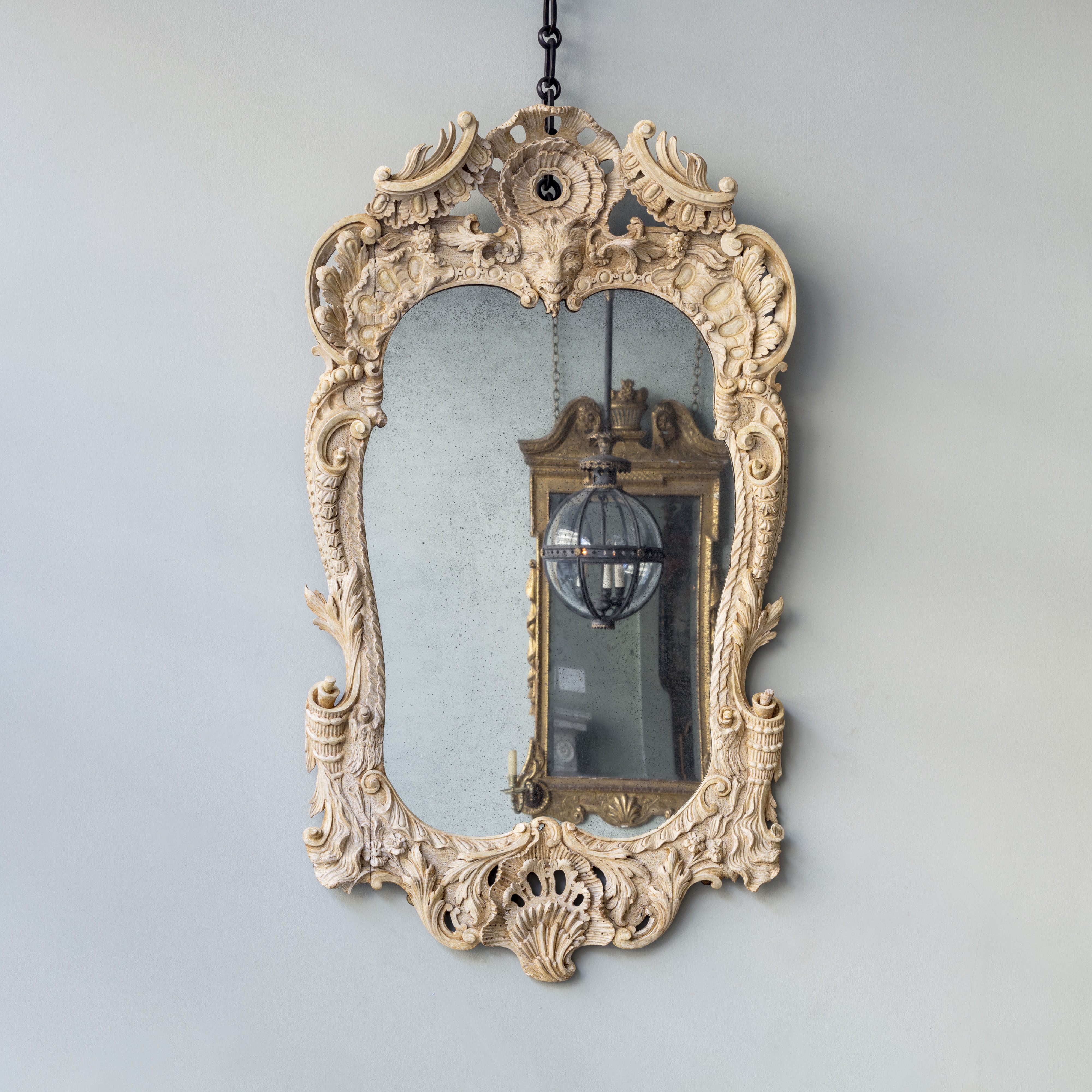
An Exceptional Rococo Carved Giltwood Pier Mirror with Central Goat Mask. English c. 1740.
Glass was a commodity in the 17th and 18th Centuries and mirrors became the most revered pieces of furniture. They were symbols of huge wealth and proffered as gifts to Royals. Pure handed craftsmanship, not only in the constructing of intricate gilt framing but in the hugely skilled and complex glass making – highly dangerous and incredibly expensive to make. The Rococo Carved Giltwood Pier Mirror with Central Goat Mask is an exceptional example and one of many in our collection.

Detail of the central goat mask, within scolling cornucopia and acanthus border.
I feel incredibly lucky to be able to deal in such important pieces. A mirror really does complete the English country aesthetic which Jamb is synonymous with.
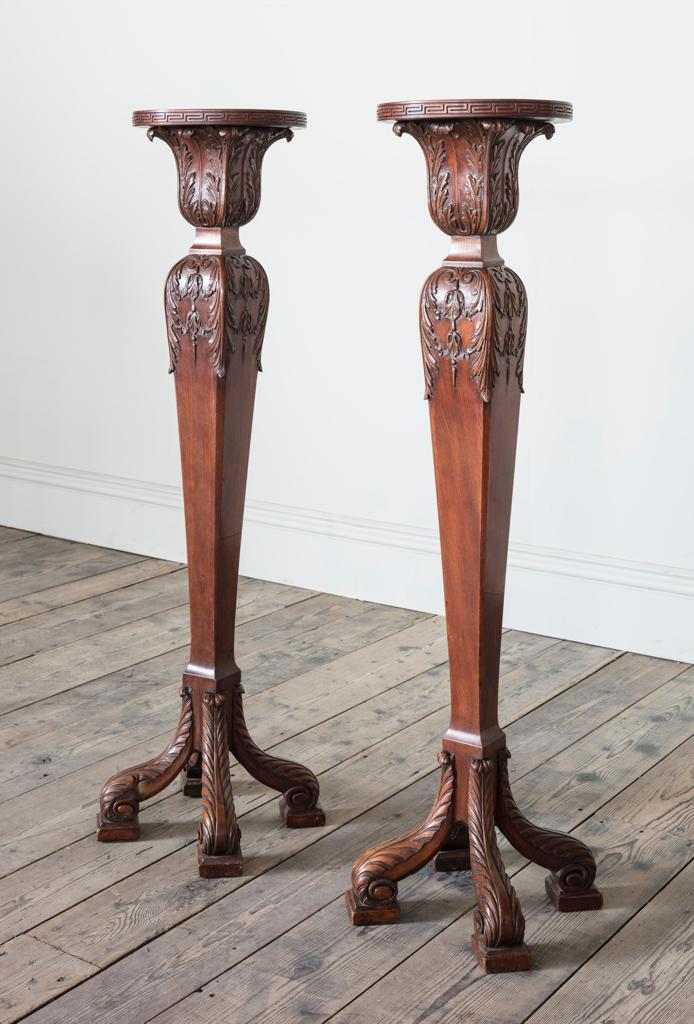
An important pair of George II mahogany carved torchères.
The surface of a piece is what I am often drawn to and the densely grained mahogany of this important pair of George II carved torchères is a perfect example.

The torchères, (Circa 1740) came from a private collection in Europe and are rare and unusual,of Palladian period design rarely seen.
It is of exceptional quality and chosen by the carver to achieve the level of depth and detail in the acanthus carving in the upper section of the stems and on the shoulders of the inverted tapering bodies.

During the recent process of cleaning and waxing these torchères our restorer found small traces of 18th Century parcel-gilding, which suggests that the carved details may have originally been highlighted in gilt. The torcheres, (Circa 1740) came from a private collection in Europe and are rare and unusual,of Palladian period design rarely seen, but inspired by the work of William Kent and Benjamin Goodison in the first half of the 18th Century. There is another pair in the Victoria & Albert museum, formerly from Ashburnham Palace, Sussex.
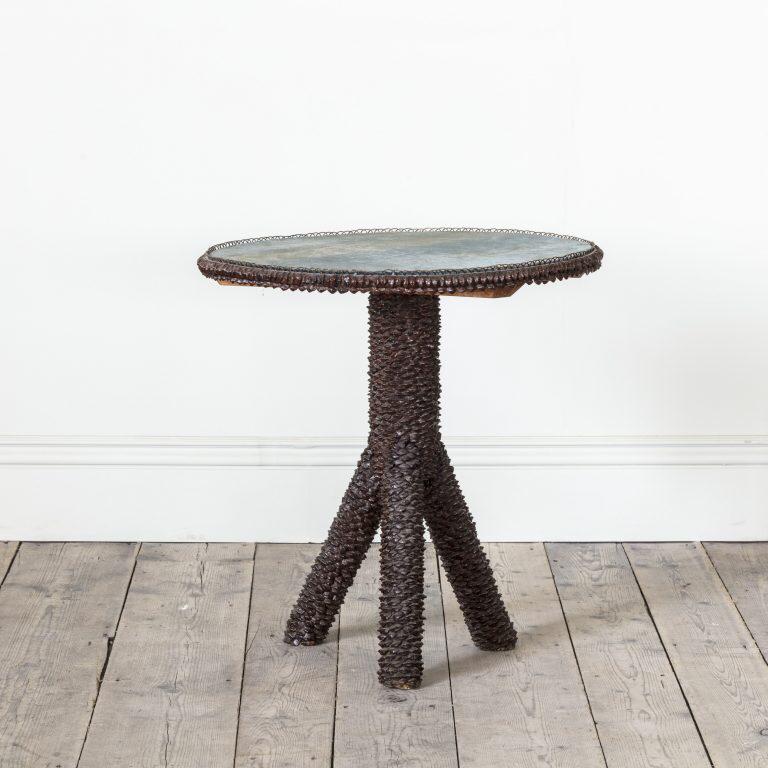
This highly unusual vernacular tripod table is constructed from pine cone scales.
I am drawn to the unusual and to the intricate craftsmanship of an antique. This highly unusual vernacular tripod table is constructed from pine cone scales. It is English c.1880 and I love it’s folk art manner. I am also drawn to the contrast of the deep chocolate tones of the pine cone scales with its teal velvet top.
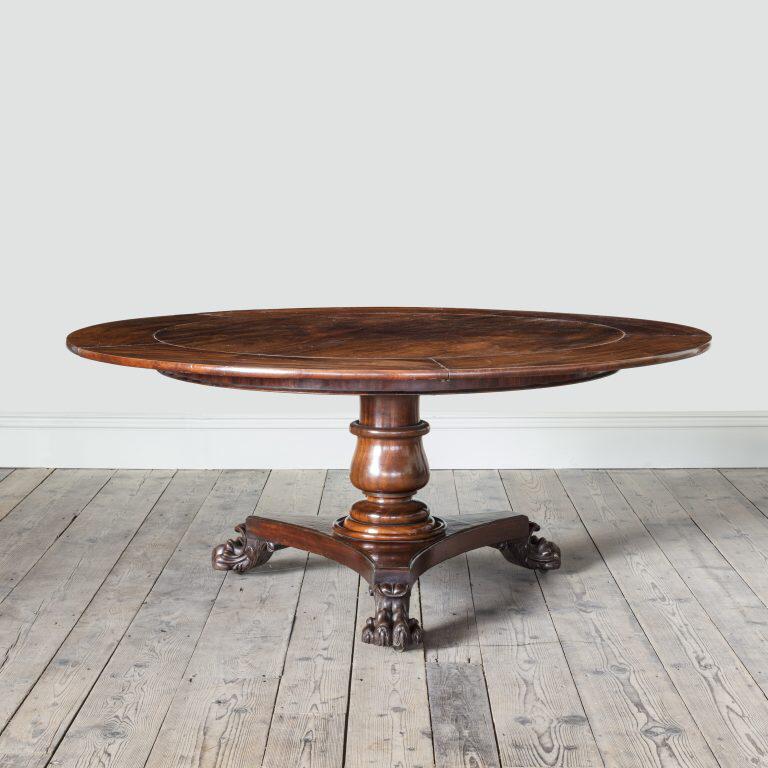
A magnificent William IV mahogany extending circular dining table.
This William IV mahogany extending circular dining table is magnificent. It has a tilt-top with additional five leaves, on a baluster turned column. The trefoil base terminating in carved paw feet and castors. It has one of the most richly figured and deep mahogany tops you will ever find in a table.

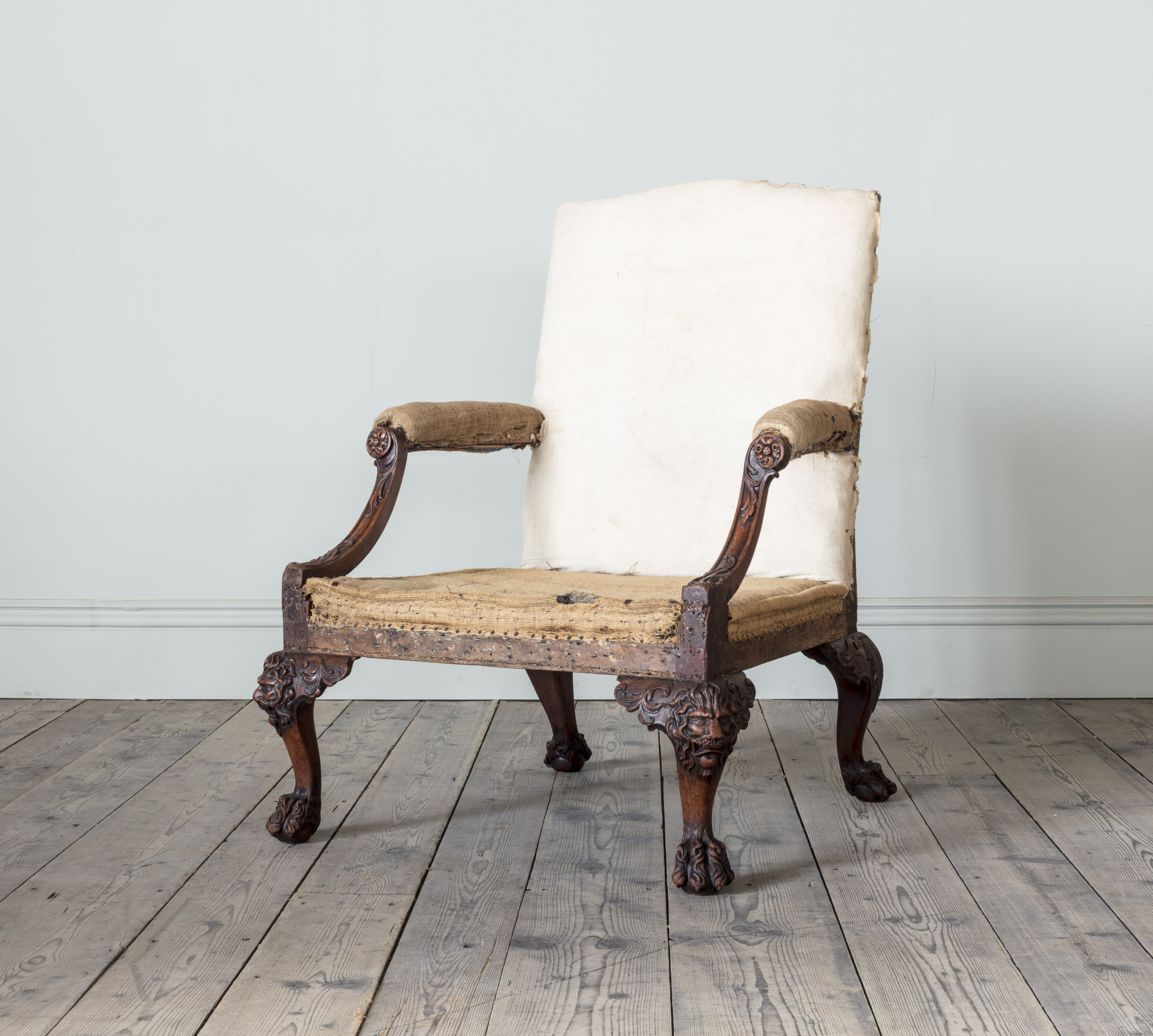
An exceptional George II Gainsborough Chair.
This George II Gainsborough Chair is again an exceptional piece.The arms carved with flowing acanthus and rosettes, resting on a large rectangular seat, supported by boldly carved cabriole legs with lions masks and hairy paw feet. Possibly by Giles Grendey.
.

It is always exciting to see these pieces move on to their new homes, the next part of their journey. That is the nature of the circling tides of antique dealing and the pleasure taken in time shared, however long or short.



